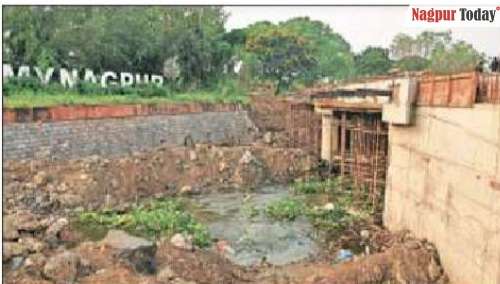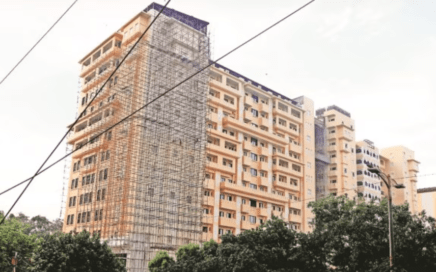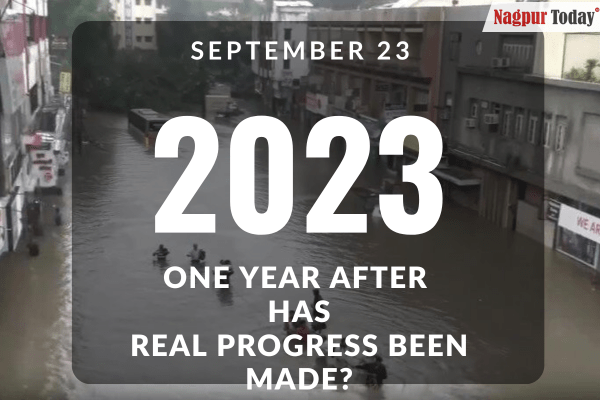 Nagpur:Today, On September 23, 2023, the Nag River swelled rapidly, flooding streets and homes, causing immense damage to property and claiming lives. A year later, areas like Ambazari Layout and Panchsheel Square still bear the scars of that catastrophic night. The memories of the Ambazari floods haunt the residents, many of whom vividly recall how they scrambled to upper floors as water gushed into their homes, vehicles submerged, and they anxiously awaited food and water.
Nagpur:Today, On September 23, 2023, the Nag River swelled rapidly, flooding streets and homes, causing immense damage to property and claiming lives. A year later, areas like Ambazari Layout and Panchsheel Square still bear the scars of that catastrophic night. The memories of the Ambazari floods haunt the residents, many of whom vividly recall how they scrambled to upper floors as water gushed into their homes, vehicles submerged, and they anxiously awaited food and water.
Though the government announced compensation, many affected residents argue it was far from sufficient considering the extensive damage. The Eichhornia weed, one of the major culprits cited for the floods, continues to choke parts of Ambazari Lake. Promised infrastructure work to prevent future flooding remains incomplete, and critical projects—like relocating the statue of Swami Vivekananda—are still under study without public conclusions. The retaining walls that collapsed near the NIT Skating Rink in Daga Layout, due to the flooding, still await reconstruction.
At many places, the task of repairing these damaged walls seems forgotten by authorities. Residents live in fear, dreading the sound of heavy rainfall battering their roofs at night, as the trauma of last year’s flood remains fresh. While some have managed to rebuild, others are unable to afford the expenses needed to restore their homes. Many are still haunted by the memory of that night when they lost everything to the floodwaters.
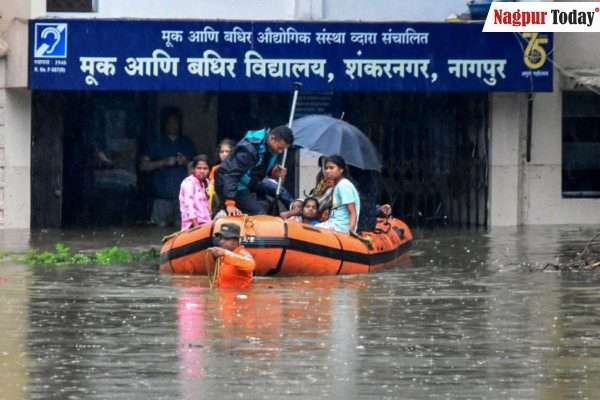
Those living in low-lying areas near Ambazari Lake recall how, in the early hours of September 23, 2023, they were awoken by a shocking and unprecedented flood that caught both residents and rescue teams off guard. Rescue teams, including the National Disaster Response Force (NDRF) and the State Disaster Response Force (SDRF), evacuated over 400 people, while four lives were lost. An estimated 10,000 houses were affected. The British-era bridge on the Naag River near Panchsheel Square collapsed under the force of the water, blocking Wardha Road for weeks.
View this post on Instagram
The Eichhornia plants, which played a critical role in triggering the flood by choking the culverts at the lake’s overflow point, are still spreading in Ambazari Lake. Despite the obvious danger they pose, the Nagpur Municipal Corporation (NMC) has failed to find a lasting solution to the infestation. Temporary fixes, such as filling collapsed retaining walls with sandbags, remain in place, but permanent reconstruction seems forgotten.
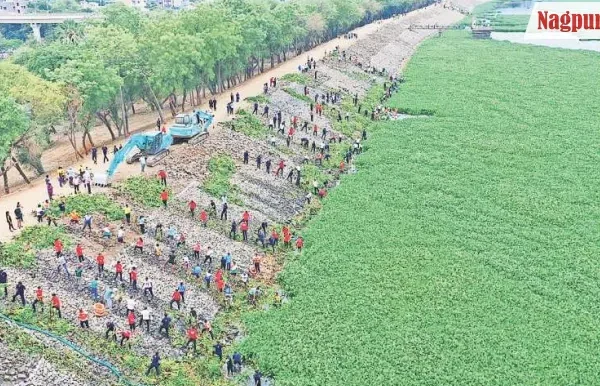
One year on, Nagpur’s citizens still live with anxiety, asking themselves: Has enough been done to prevent another disaster? Will they ever feel safe again when the rains come?




